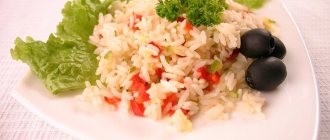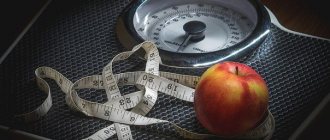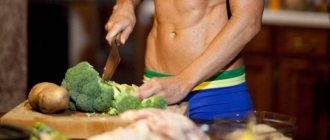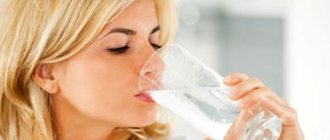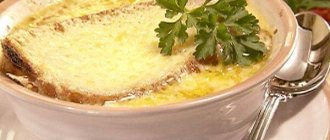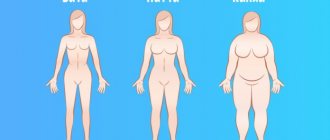General rules
Diet Table No. 11 is prescribed for diseases that are accompanied by reduced nutrition and general exhaustion (primarily tuberculosis ). The purpose of its purpose is to fully meet the need for protein, fat, vitamins , carbohydrates, increase and strengthen the body's defenses during recovery, enhance reparative processes and increase resistance to infections.
In this regard, this is a physiologically complete diet of high calorie content, in which the content of proteins (at the expense of animals), carbohydrates and fats, minerals and vitamins is increased. Chemical and mechanical irritants of the stomach and bile ducts are limited in the diet. 11 dietary table differs in the main points:
- Protein content 120 g (most animal), fat 110 g, carbohydrates 350-500 g.
- Enriched with vitamins B , C and A , and minerals (vegetables, fruits, rosehip infusion), dietary fiber, calcium (large amounts of dairy products).
- Calorie content - 3000-3500 kcal.
- Rich in dishes that improve appetite.
- You can consume the usual amount of salt (up to 15 g per day). It is limited only in case of exudative tuberculosis (6–8 g) and in severe cases (3–5 g) with a simultaneous reduction in fluid intake. This diet promotes diuresis and reduces inflammation.
- If the patient has diabetes mellitus, simple carbohydrates (sugar, sweets, confectionery) are excluded.
- With iron deficiency anemia, the amount of protein consumed is further increased to 140 g, since it stimulates the absorption of iron from food and the amount of fat is reduced to 80–90 g, which, on the contrary, impede the absorption of iron.
- Lean meat and poultry are recommended.
- Dishes are prepared stewed, boiled and baked. They can be served pureed or not - it depends on the patient’s health condition.
- Liquid is allowed up to 1.5–2 liters.
- Fractional meals are provided 4–6 times a day.
Due to the fact that in patients with tuberculosis proteins break down faster than in healthy people, more protein foods are included in the diet. At the same time, proteins must be easily and completely digested, which is why it is envisaged to consume all kinds of dairy products. In second place is lean meat and less desirable sources of protein are prepared meats and fatty meats/poultry. The same applies to fats: vegetable oils, butter and fish oil are recommended, but cooking fats, pork and lamb are not recommended.
The diet must include calcium and phosphorus. These substances are found in cauliflower, milk, cottage cheese, butter, cheese, kefir, sour cream, tomatoes, and figs. It should be noted that in milk these elements are in the required proportions.
A few words about vitamins . Taking anti-tuberculosis drugs significantly affects the metabolism of vitamins, and vitamin deficiencies . Knowing which foods they predominate in, it is imperative to include them in the patient’s diet. A patient with tuberculosis should receive 2 times more vitamin C Sources of this vitamin are: lemons, oranges, kiwi, tangerines, strawberries, black currants, gooseberries, cabbage, bell peppers, onions. Vitamin B1 is involved in carbohydrate metabolism and must be supplied daily with food, since it is not synthesized in the body.
It is present in large quantities in rice, brewer's yeast, wheat, sprouted rye grains, legumes, beef, kidneys, liver, and egg yolk. Vitamin B2 is contained in sunflower, cottonseed, corn and soybean oils, as well as sprouted wheat grains. Sources of vitamin B3 are nuts, brewer's yeast, legumes, grains, mushrooms, liver, potatoes, beef, pork, herring, eggs. Vitamin B6 is also an important ingredient in the diet of patients, since it is involved in protein metabolism. Contained in liver, kidneys, meat, cod, corn, legumes.
vitamin PP : brown rice, yeast, wheat germ, salmon, liver, shrimp. Vitamin B12 stimulates protein synthesis and is very important for patients. Contained in fish, beef and pork liver. Vitamin A is rich in: animal liver, egg yolks and butter, and carotenes (provitamins of vitamin A ) are formed in carrots, lettuce, fresh and dried apricots. Sources of vitamin E are cereal sprouts, sunflower, cottonseed, peanut, corn, soybean oils, meat, eggs, and milk.
Thus, therapeutic nutrition for this disease is the main factor aimed at correcting metabolism.
Principles of therapeutic nutrition
In patients with serious infectious diseases (tuberculosis, lobar pneumonia), anemia, and also after extensive surgical interventions, body weight is often sharply reduced, and can reach critically low levels. In this state, it is very difficult for the body to fight and diseases often become chronic. The treatment method according to Pevzner is designed to quickly return the patient’s weight to normal, which will help him increase his immune resistance and prevent complications.
The diet of table No. 11 normalizes body weight and is also complete. It contains all vital nutrients, vitamins and minerals. The technique is based on the principle of a healthy diet, but with an increased daily calorie intake of food. The diet consists of 5 meals per day, the last of which should occur no later than 2 hours before bedtime.
Every day the patient should gain at least 3000 kcal, however, an increase in caloric intake of more than 3500 kcal is undesirable. The goal of the diet is to normalize weight, improve the functioning of all organs and systems of the body, but without exceeding the daily calorie intake, so that there is no reverse effect in the form of obesity. The required amount of kilocalories should be gained from protein foods and plant fiber. Animal and vegetable fats, slow carbohydrates remain within the requirements or increase slightly.
There are no requirements regarding chemical, thermal or mechanical sparing. Food can be prepared in any available way, fried is allowed, but the amount should be moderate - no more than once a day. Stewed and baked dishes, natural desserts, thick soups and borscht are best suited.
In order to compensate for vitamin deficiency, it is recommended to eat more seasonal plant foods: leafy vegetables, herbs, berries, fruits of local origin. It is important to choose only the most healthy products. For example, grapes in winter will not bring any benefit and will not fill the deficit, just like oranges in summer.
In case of tuberculosis, the menu must include dairy and fermented milk products. It is recommended to use natural milk from cows, goats, and sheep. Such foods are essential for replenishing calcium and healthy animal fats. In case of anemia, the amount of whole dairy products should be determined by a doctor, as it interferes with the absorption of iron.
Weight gain and recovery must occur correctly. The calorie content of the diet should not increase due to too fatty foods and semi-finished products. The following should be excluded from the menu:
- chips and crackers, snacks with flavoring additives;
- ready-made cakes, cream pies, chocolate with filling;
- artificial seasonings and spices;
- beef and lamb fat;
- low-quality sausages;
- cheap cheeses, processed cheeses;
- store-bought sauces and pastes (fish oil, mayonnaise, sandwich spreads);
- instant coffee, sweet soda, energy drinks, alcohol.
The amount of sugar and salt should be reduced. You can sweeten drinks and homemade desserts with honey or maple syrup. To add brightness to the taste of dishes without salt, you can use herbs and greens: basil, cilantro, marjoram, rosemary, etc. Spices made from natural ingredients are not prohibited: turmeric, cinnamon, cloves, nutmeg, paprika, etc.
It is advisable to structure your diet so that carbohydrates predominate at the beginning and middle of the day, and in the evening you should give preference to protein and plant foods. Fruits are suitable for breakfast and lunch, and for an afternoon snack it is better to eat fresh vegetables and drink fermented milk drinks.
It is imperative to introduce nuts to replenish essential amino acids, vegetable fats, and vitamins. Any available varieties are suitable: cashew, walnut, hazelnut, peanut. It is also recommended to use sesame, flax, and poppy seeds. They can be added to desserts, vegetable salads, and savory baked goods.
Salads should be seasoned with sour cream, vegetable oil, and lemon juice. Mayonnaise and other store-bought sauces should be avoided. It is advisable to eat a serving of liquid food every day: broths, fish soup, borscht, cream soups. They can be cooked in secondary meat, fish, and mushroom broth. It is not forbidden to add cereals and pasta to the first meal.
The exact menu and set of products for the patient should be clarified with the attending physician. The composition of the diet is influenced by the type and degree of the disease, the stage of recovery, and the presence of concomitant diseases. Arbitrary changes in diet can worsen the patient's situation.
Varieties
11 The diet has several options that take into account the localization of the tuberculosis process and its nature, as well as the presence of complications and concomitant diseases of the digestive system.
Option #1
Indicated for patients with reduced body reactivity, weakness, fever, and with a sluggish course of the disease. It has a slightly reduced content of proteins, fats and carbohydrates. The culinary preparation is the same, eating 5-6 times a day.
Option No. 2
Prescribed during periods of exacerbation, with severe inflammatory phenomena with tissue breakdown, high fever and exhaustion. The diet has an increased energy value and chemical composition, as with the main diet. The difference is that the food is prepared pureed and meals are eaten every 2–3 hours. Due to severe intoxication, an increased amount of ascorbic acid , various drinks (raw juices, rosehip decoction), vegetables and fruits are recommended.
Option #3
Recommended for exudative processes, therefore food is prepared without salt, and liquid is limited to 900–1000 ml. The chemical composition differs slightly from the main table.
Table No. 11o
Indicated for patients with burn disease. This is a diet with a high protein content (110–120 g) and adequately compensates for the protein and energy needs of the patient with superficial burns of a small area (10–20% of the body surface). Salt is limited in it (up to 6–8 g/day), meals are fractional. Dishes are prepared in stewed, boiled and mashed form, which provides chemical and mechanical sparing of the stomach. Liquid is allowed in quantities of 1.5–2 liters.
Indications for use of diet No. 11
This diet is indicated not only in the presence of tuberculosis, but also in the following cases:
- if necessary, increase body weight;
- tuberculosis of various parts of the body and organs;
- infectious pathologies;
- severe exhaustion due to illness or long-term therapy in a hospital;
- anemia;
- during the recovery period after surgery;
- pneumonia.
The main task of nutrition is to strengthen the immune system, increase hemoglobin levels and saturate the body with vitamins and all necessary macro- and microelements. But the main condition for prescribing a diet is the absence of pathologies from the gastrointestinal tract.
After following the diet, patients note an improvement in their general condition, their sleep is normalized, headaches and chronic fatigue disappear.
Authorized Products
The diet includes a variety of foods and dishes that stimulate appetite and are rich in extractive substances (broths, spices, but in moderation). Food should be tasty, have a pleasant smell and appetizing appearance (decorating dishes, adding fresh herbs to them). It is advisable that the main courses be preceded by appetizers in the form of vegetable salads with plenty of green onions, parsley, dill and the addition of vegetable oil.
Any bread according to the patient’s preferences is allowed: rye, wheat, grain. Baked goods and flour products are allowed. You can prepare any soups, excluding only fatty broths based on lamb and fatty pork. For first courses, you can offer (at the patient’s request) onions and garlic, which also stimulate the appetite.
Lean meat and chicken are served in any form: boiled, fried, baked and stewed. Moreover, fried and baked foods stimulate the appetite more. Liver and dishes made from it, as well as meat products, are also recommended. Fish can be of any variety, and its processing can also be varied. You can eat herring, canned food and fish roe as snacks. Sauces for meat and fish dishes and salad dressings should not be too spicy or fatty.
The side dish is prepared from any cereals, which need to be alternated in order to maximize the variety of the diet and enrich it with microelements. Cereals are used for milk porridges, casseroles and puddings. All pasta, any vegetables and legumes can be used as side dishes. Culinary processing allows you to prepare different dishes - stews, stewed vegetables, vegetable purees.
Any dairy products are allowed without restrictions: milk and milk drinks, kefir, ayran, kumiss, yogurt, cheeses, cottage cheese and dishes made from it. It depends on the patient's preferences. Fresh fruits can be consumed in their natural form and in the form of fruit salads, desserts, fruit drinks, juices, compotes or jelly. A decoction of rose hips, herbal decoctions with honey and lemon are useful. It is allowed to eat preserves, jams, marshmallows, marmalade, and marshmallows.
Table of permitted products
| Proteins, g | Fats, g | Carbohydrates, g | Calories, kcal | |
Vegetables and greens | ||||
| spicy vegetables | 2,8 | 0,5 | 5,3 | 36 |
| zucchini | 0,6 | 0,3 | 4,6 | 24 |
| cabbage | 1,8 | 0,1 | 4,7 | 27 |
| sauerkraut | 1,8 | 0,1 | 4,4 | 19 |
| bulb onions | 1,4 | 0,0 | 10,4 | 41 |
| carrot | 1,3 | 0,1 | 6,9 | 32 |
| canned cucumbers | 2,8 | 0,0 | 1,3 | 16 |
| pickles | 0,8 | 0,1 | 1,7 | 11 |
| beet | 1,5 | 0,1 | 8,8 | 40 |
| canned tomatoes | 1,1 | 0,1 | 3,5 | 20 |
| pumpkin | 1,3 | 0,3 | 7,7 | 28 |
| garlic | 6,5 | 0,5 | 29,9 | 143 |
Fruits | ||||
| apricots | 0,9 | 0,1 | 10,8 | 41 |
| oranges | 0,9 | 0,2 | 8,1 | 36 |
| watermelon | 0,6 | 0,1 | 5,8 | 25 |
| bananas | 1,5 | 0,2 | 21,8 | 95 |
| pears | 0,4 | 0,3 | 10,9 | 42 |
| melon | 0,6 | 0,3 | 7,4 | 33 |
| figs | 0,7 | 0,2 | 13,7 | 49 |
| lemons | 0,9 | 0,1 | 3,0 | 16 |
| tangerines | 0,8 | 0,2 | 7,5 | 33 |
| plums | 0,8 | 0,3 | 9,6 | 42 |
| apples | 0,4 | 0,4 | 9,8 | 47 |
Berries | ||||
| grape | 0,6 | 0,2 | 16,8 | 65 |
| strawberry | 0,8 | 0,4 | 7,5 | 41 |
| cranberry | 0,5 | 0,0 | 6,8 | 26 |
Mushrooms | ||||
| mushrooms | 3,5 | 2,0 | 2,5 | 30 |
| marinated mushrooms | 2,2 | 0,4 | 0,0 | 20 |
Nuts and dried fruits | ||||
| raisin | 2,9 | 0,6 | 66,0 | 264 |
| dried apricots | 5,2 | 0,3 | 51,0 | 215 |
| dried apricots | 5,0 | 0,4 | 50,6 | 213 |
| dates | 2,5 | 0,5 | 69,2 | 274 |
Cereals and porridges | ||||
| buckwheat (kernel) | 12,6 | 3,3 | 62,1 | 313 |
| cereals | 11,9 | 7,2 | 69,3 | 366 |
| corn grits | 8,3 | 1,2 | 75,0 | 337 |
| pearl barley | 9,3 | 1,1 | 73,7 | 320 |
| millet cereal | 11,5 | 3,3 | 69,3 | 348 |
| white rice | 6,7 | 0,7 | 78,9 | 344 |
Confectionery | ||||
| jam | 0,3 | 0,2 | 63,0 | 263 |
| jelly | 2,7 | 0,0 | 17,9 | 79 |
| marshmallows | 0,8 | 0,0 | 78,5 | 304 |
| candies | 4,3 | 19,8 | 67,5 | 453 |
| fruit and berry marmalade | 0,4 | 0,0 | 76,6 | 293 |
| paste | 0,5 | 0,0 | 80,8 | 310 |
| cookie | 7,5 | 11,8 | 74,9 | 417 |
| cake | 3,8 | 22,6 | 47,0 | 397 |
Chocolate | ||||
| chocolate | 5,4 | 35,3 | 56,5 | 544 |
Raw materials and seasonings | ||||
| honey | 0,8 | 0,0 | 81,5 | 329 |
| sugar | 0,0 | 0,0 | 99,7 | 398 |
Dairy | ||||
| milk | 3,2 | 3,6 | 4,8 | 64 |
| kefir | 3,4 | 2,0 | 4,7 | 51 |
| cream | 2,8 | 20,0 | 3,7 | 205 |
| sour cream | 2,8 | 20,0 | 3,2 | 206 |
| curdled milk | 2,9 | 2,5 | 4,1 | 53 |
| acidophilus | 2,8 | 3,2 | 3,8 | 57 |
| yogurt | 4,3 | 2,0 | 6,2 | 60 |
Cheeses and cottage cheese | ||||
| cottage cheese | 17,2 | 5,0 | 1,8 | 121 |
Meat products | ||||
| beef | 18,9 | 19,4 | 0,0 | 187 |
| veal | 19,7 | 1,2 | 0,0 | 90 |
| rabbit | 21,0 | 8,0 | 0,0 | 156 |
Bird | ||||
| chicken | 16,0 | 14,0 | 0,0 | 190 |
| turkey | 19,2 | 0,7 | 0,0 | 84 |
Eggs | ||||
| chicken eggs | 12,7 | 10,9 | 0,7 | 157 |
Fish and seafood | ||||
| black caviar | 28,0 | 9,7 | 0,0 | 203 |
| salmon caviar granular | 32,0 | 15,0 | 0,0 | 263 |
| punched pollock caviar | 28,4 | 1,9 | 0,0 | 131 |
| canned fish | 17,5 | 2,0 | 0,0 | 88 |
Oils and fats | ||||
| peasant unsalted butter | 1,0 | 72,5 | 1,4 | 662 |
| corn oil | 0,0 | 99,9 | 0,0 | 899 |
| olive oil | 0,0 | 99,8 | 0,0 | 898 |
| sunflower oil | 0,0 | 99,9 | 0,0 | 899 |
Non-alcoholic drinks | ||||
| mineral water | 0,0 | 0,0 | 0,0 | — |
| coffee | 0,2 | 0,0 | 0,3 | 2 |
| lingonberry juice | 0,1 | 0,0 | 10,7 | 41 |
| green tea | 0,0 | 0,0 | 0,0 | — |
| black tea | 20,0 | 5,1 | 6,9 | 152 |
Juices and compotes | ||||
| apricot juice | 0,9 | 0,1 | 9,0 | 38 |
| carrot juice | 1,1 | 0,1 | 6,4 | 28 |
| pumpkin juice | 0,0 | 0,0 | 9,0 | 38 |
| * data is per 100 g of product | ||||
Do's and don'ts
Recommended and excluded foods and dishes of the “11 table” diet:
Table “What is possible and what is not”
| Products and dishes | What is possible | What not to do |
| Bread and flour products | Wheat and rye bread and various flour products (pies, cookies, biscuits, baked goods, etc.). | — |
| Soups | Any | — |
| Meat, poultry, fish | Various types of meat, poultry and fish in any culinary preparation. Liver, meat products (sausage, ham, frankfurters), fish products (herring, balyk, caviar, canned food - sprats, sardines, etc.); non-fish seafood. | Exclude very fatty ones. |
| Dairy | In full assortment with the obligatory inclusion of cottage cheese and cottage cheese. | — |
| Eggs | In different preparations. | — |
| Cereals | Various cereals (especially buckwheat, oatmeal), pasta. Legumes, well boiled, in the form of puree. | — |
| Vegetables, fruits, berries | In any culinary processing, but some of it must be raw. | — |
| Snacks | Various snacks, especially leafy and vegetable salads. | — |
| Sweet dishes, sweets | Various sweet dishes, honey, jam, etc. | Cakes and pastries with lots of cream. |
| Sauces and spices | Red meat, milk bechamel, sour cream, egg-milk, etc., spices in moderation. | Spicy and fatty sauces. |
| Beverages | Any, necessarily vegetable and fruit juices, a decoction of rose hips and wheat bran. | — |
| Fats | Butter, vegetable oil in its natural form, ghee - for cooking. | Lamb, beef and cooking fats. |
Fully or partially limited products
The list of excluded products is small:
- very fatty meats and poultry;
- cooking fat, lamb and beef fat;
- cakes with a lot of cream.
Table of prohibited products
| Proteins, g | Fats, g | Carbohydrates, g | Calories, kcal | |
| pastry cream | 0,2 | 26,0 | 16,5 | 300 |
| pork | 16,0 | 21,6 | 0,0 | 259 |
| duck | 16,5 | 61,2 | 0,0 | 346 |
| smoked duck | 19,0 | 28,4 | 0,0 | 337 |
| goose | 16,1 | 33,3 | 0,0 | 364 |
| animal fat | 0,0 | 99,7 | 0,0 | 897 |
| cooking fat | 0,0 | 99,7 | 0,0 | 897 |
| * data is per 100 g of product | ||||
Chemical composition and energy value
There are strict limits that must be adhered to:
- Proteins – 100-120 grams (half of them are of animal origin).
- Fats – 90-100 grams (at least 30 grams from plant products).
- Carbohydrates – 300-350 grams.
- Table salt – up to 15 grams.
- Free liquid – one and a half to two liters.
- The energy value of the diet is up to 3000 kcal.
- The weight of the daily diet is approximately 3 kg.
- Diet: eat small portions up to 6 times a day.
The daily calorie intake ranges from 2200 to 3000. Diet number 11 implies compliance with the drinking regime: up to 2 liters of liquid per day (including both water and other drinks). Salt is allowed 6-8 grams per day. It is prohibited to eat cold or hot foods. The optimal temperature will be 15-50 degrees.
Menu (Power Mode)
Since Diet number 11 includes all foods, the menu can be varied. It is necessary to include foods in which all the substances necessary for the body are present in optimal proportions: fish, meat, eggs, dairy products, vegetables and fruits. The emphasis in the diet is on protein foods and it is important to maintain a protein minimum at the rate of 1.5-2 g per 1 kg of weight (on average 120-130 g). It must be remembered that the digestibility of animal proteins is 94%, and that of plant proteins (bread, cereals, legumes) is somewhat less - 74%.
Considering the vitamin composition of foods mentioned above, you should try to include them in your diet every day. The distribution of energy value should be as follows: breakfast 30%, lunch - 40%, dinner - 20%, before bed 10%. The intervals between meals are no more than 4 hours. For the whole day, the patient can have 400 g of bread (wheat + rye bread) and 20 g of sugar.
Option 1
| Breakfast |
|
| Lunch |
|
| Dinner |
|
| Afternoon snack |
|
| Dinner |
|
| For the night |
|
Option 2
| Breakfast |
|
| Lunch |
|
| Dinner |
|
| Afternoon snack |
|
| Dinner |
|
| For the night |
|
The essence of the diet
The essence of the diet table is to enrich the body with the right amount of calories and nutrients.
The calorie content of this diet is increased, since the 11th table diet is aimed at increasing the content of animal proteins, vitamins, as well as minerals and elements such as iron, calcium and others in the patient’s body, and a moderate increase in the proportion of fats and carbohydrates.
Nutrition has been created for depletion of the body as a result of various diseases, injuries or operations. It is also recommended to use the diet to restore previous weight if it was lost due to pathologies.
We advise you to familiarize yourself with the rules of the hypocholesterol diet.
Reviews and results
This therapeutic food cannot be called monotonous and tasteless, since it is complete and all foods are allowed. It all depends only on the possibilities and desire to diversify it.
The diet contains an increased amount of protein - the patient receives protein foods 5 times a day (including kefir or milk at night). Reviews often contain messages from patients who have suffered severe pneumonia or surgery and who were prescribed this diet.
- “... After several operations for a burn, I lost a lot of weight (by 10 kg), had almost no appetite, and had severe weakness. Already in the hospital, the doctor said that to enhance healing, you need good nutrition - mainly protein. The hospital could not provide this, and my relatives brought me parcels every day (even red caviar, salmon and cod liver). After a month, I began to feel more energetic, and the weight was restored only after 5 months”;
- “... There was severe abscess pneumonia, they made a puncture twice, endless fillings through a bronchoscope, a lot of antibiotics were dropped. We even thought about tuberculosis at first. I suffered terribly and in the end I could barely stand on my feet from weakness and loss of strength, but I didn’t want to eat anything. She started with intravenous glucose and vitamins and began bringing high-calorie foods from home to add to hospital meals. At home I continued to eat heavily and only got out of it a month later.”
Diet No. 11 during pregnancy
During pregnancy, diet table No. 11 is used if moderate or severe anemia is diagnosed against the background of poor weight gain in a woman. The rules of the diet remain virtually unchanged, but the set of products will be slightly different.
Pregnant women are given more fortified foods. At the same time, foods that are highly allergenic are often minimized: red and orange fruits, nuts, citrus fruits.
Daily calorie content remains within 3000-3500 kcal. The diet should be controlled by the patient herself. If you have no desire to eat, you should never force yourself. In this case, meals should be divided up to 7-8 times a day, in small portions. If your appetite is better in the second half of the day, which happens during pregnancy, then it is recommended to increase the serving size with healthy and low-calorie foods.
The basic principles when compiling the diet of table No. 11 for pregnant women should be based on a varied and nutritious diet. The diet must contain all the necessary components with an emphasis on protein and fiber.
Table No. 11 cannot be used without a doctor’s recommendation. You need to check with your doctor for a complete list of prohibited foods, which is compiled based on tests, degree of illness, trimester, and the presence of other diseases.
Diet 11 may be prescribed for a child. In this case, the principles of nutrition remain the same as for adults. Be sure to include easily digestible proteins in the menu: fish, eggs, rabbit meat, Brussels sprouts, cereals. Food on the children's menu should be minimally salted. The amount of sweets is also kept to a minimum.
